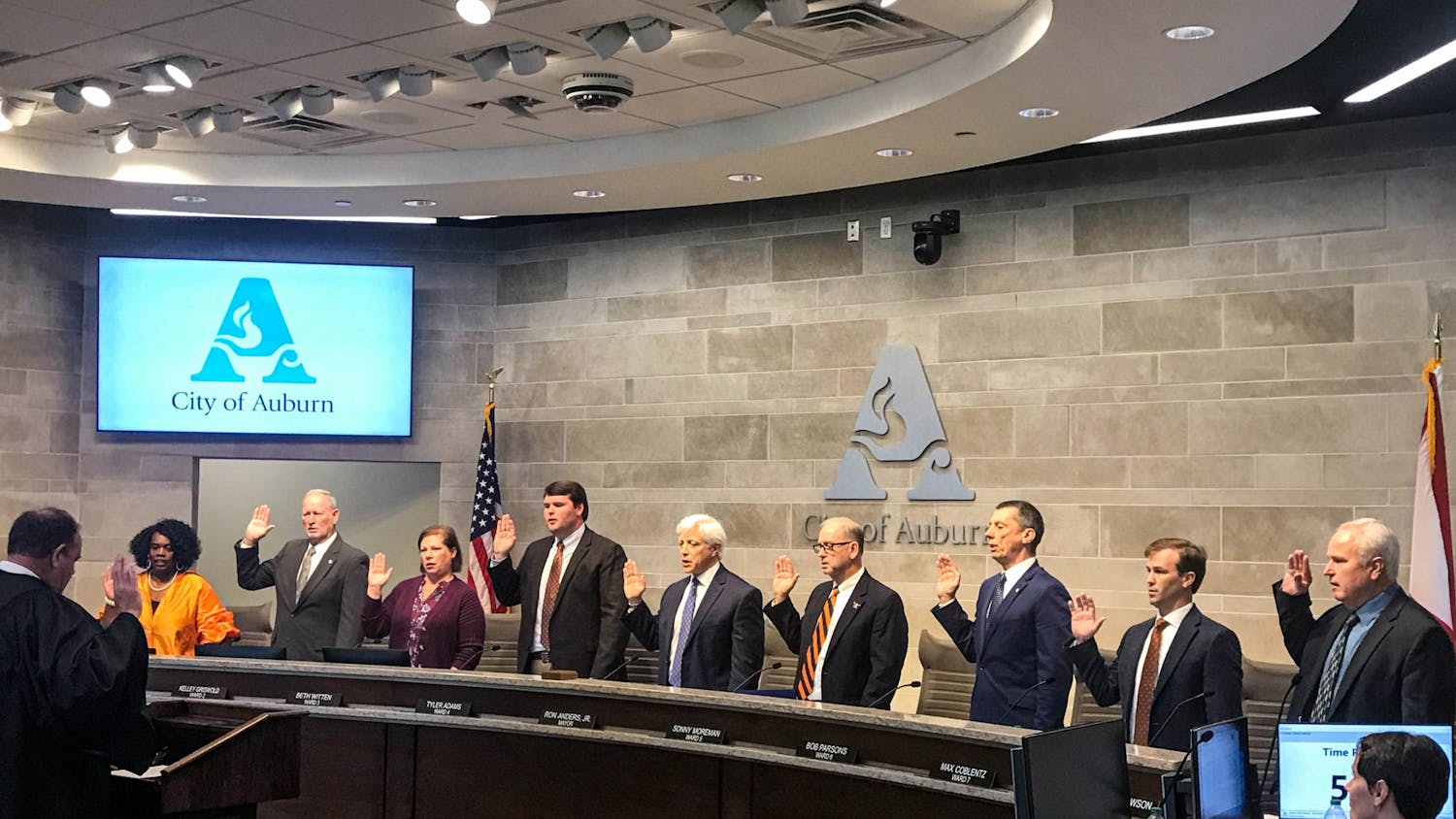With over 8,500 trees on the core campus and 12,000 when extended to all Auburn woodland property with roughly 130 different species, Auburn earns Tree Campus USA for the ninth year in a row.
Each tree holds equal importance and responsibility for making Auburn University not only one of the loveliest universities in the southeast but also granting Auburn its ninth consecutive Tree Campus USA designation from the Arbor Day Foundation.
“The Arbor Day Foundation wants to see intention and planning for how the urban canopy will grow and thrive,” said Alex Hedgepath, the University's first arborist.
Recognition from the Tree Campus USA requires five standards: the establishment of a Campus Tree Advisory Committee, a Campus Tree Care Plan, A Campus Tree Program with Dedicated Annual Expenditures, observance of Arbor Day and at least one Service Learning Project per year.
“Tree Campus USA recognition is foundational in achieving Landscape Services’ goal of making Auburn University one of the best urban forest collections in the country,” Hedgepath said. It is his job to sustain the health of Auburn’s trees as well as the campus’ beauty and safety.
Recognition from Tree Campus USA only sparked a greater drive to do more, especially with the benefits provided by expanded tree coverage including sustainability, aesthetics and carbon storage.
With the coming year, Hedgepath and the rest of the Facilities Management Landscape Services Department are focused on three main goals: increasing involvement from stakeholders through an increase in the Tree Campus Advisory Committee membership, increasing the canopy’s Genus diversity and aggressive soil management for mature tree preservation.
“Diversity is extremely important because the more diverse a canopy is, the more resilient it is in the event of a disease outbreak,” Hedgepath said.
While increasing the count remains on Landscape Services’ radar, increasing numbers of certain Genera, or different types, like Liriodendron (tulip poplars), Nyssa (tupelos) or Carya (hickory) and finding urban-friendly cultivators of each.
Equal emphasis will be placed on the preventative maintenance of older trees and plant growth through fertilization and soil management of middle-aged and recently planted trees.
“A tree is only as good as its roots and a canopy is only as good as the overall health of the tree,” Hedgepath explained.
Climate shifts, both subtle and dramatic, greatly affect which trees survive.
“We’ve seen a lot of maples, pines and select species of oak really struggle to respond after the extremely dry autumn of 2016 followed by an extremely wet growing season of 2017,” Hedgepath said.
Over the last year, Landscape Services has planted over 120 trees and remains dedicated to increasing diversity, aesthetics and benefits through expansion. Still, removal occurs, especially with increased campus development.
Per the AU Tree Preservation Policy, all tree removals must be pre-approved by the Tree Preservation Committee, which helps manage Auburn’s tree growth. Removal is only requested for high-risk, declining, or poor performing trees.
However, when a tree must be removed, Landscape Services makes the most of it.
“A good practice we have is not to replace each tree one for one but to try to replace the canopy that was lost from large tree removes with new plantings,” Hedgepath said.
If 1000-square feet of tree canopy is removed, Landscape Services plants 40 or more 25-square foot trees the following year to get the return to net zero or increase the canopy altogether.
Feats such as these aren’t accomplished alone. Throughout the year, it receives counsel from the Tree Preservation Committee and the Campus Tree Advisory Committee. Landscape Services also works heavily with the Campus Planners of the Office of the University Architect to create planting strategies consistent with the Landscape Master Plan for Auburn University.
“It takes familiarity with the campus to know where a tree planting would be most effective,” Hedgepath said. “The Campus Planners in OUA are unique in understanding these flows on campus and help guide us on the social impacts and benefits that new trees will have.”
Hedgepath said collaboration will continue as they attempt to understand how trees can be used as Green Infrastructure that will benefit other areas like stormwater management on campus.
Auburn University was the first SEC school to earn this recognition originally, and Landscape Services remains dedicated to that pioneering legacy.
“Truly, Auburn hit a high note in 2015 with the hire of a full-time arborist who would be strictly devoted to urban forest management and maintenance,” said Justin Sutton, Auburn University’s landscape superintendent. “To continue making big strides, Landscape Services looks to improve on this by growing the in-house Tree Care Team and placing more focus in the coming years on tree preservation, existing canopy growth, inventory and public outreach.”
Do you like this story? The Plainsman doesn't accept money from tuition or student fees, and we don't charge a subscription fee. But you can donate to support The Plainsman.



